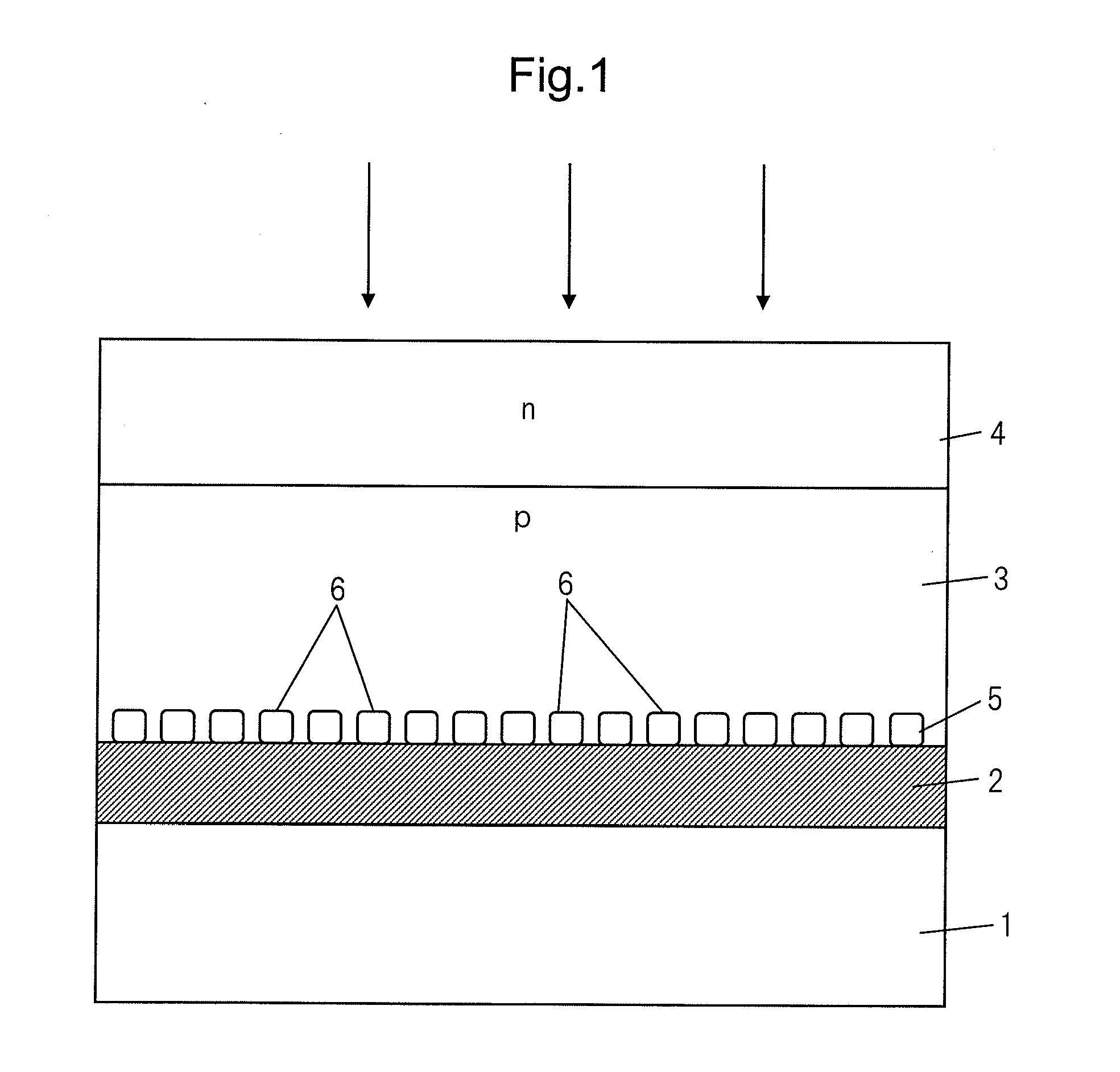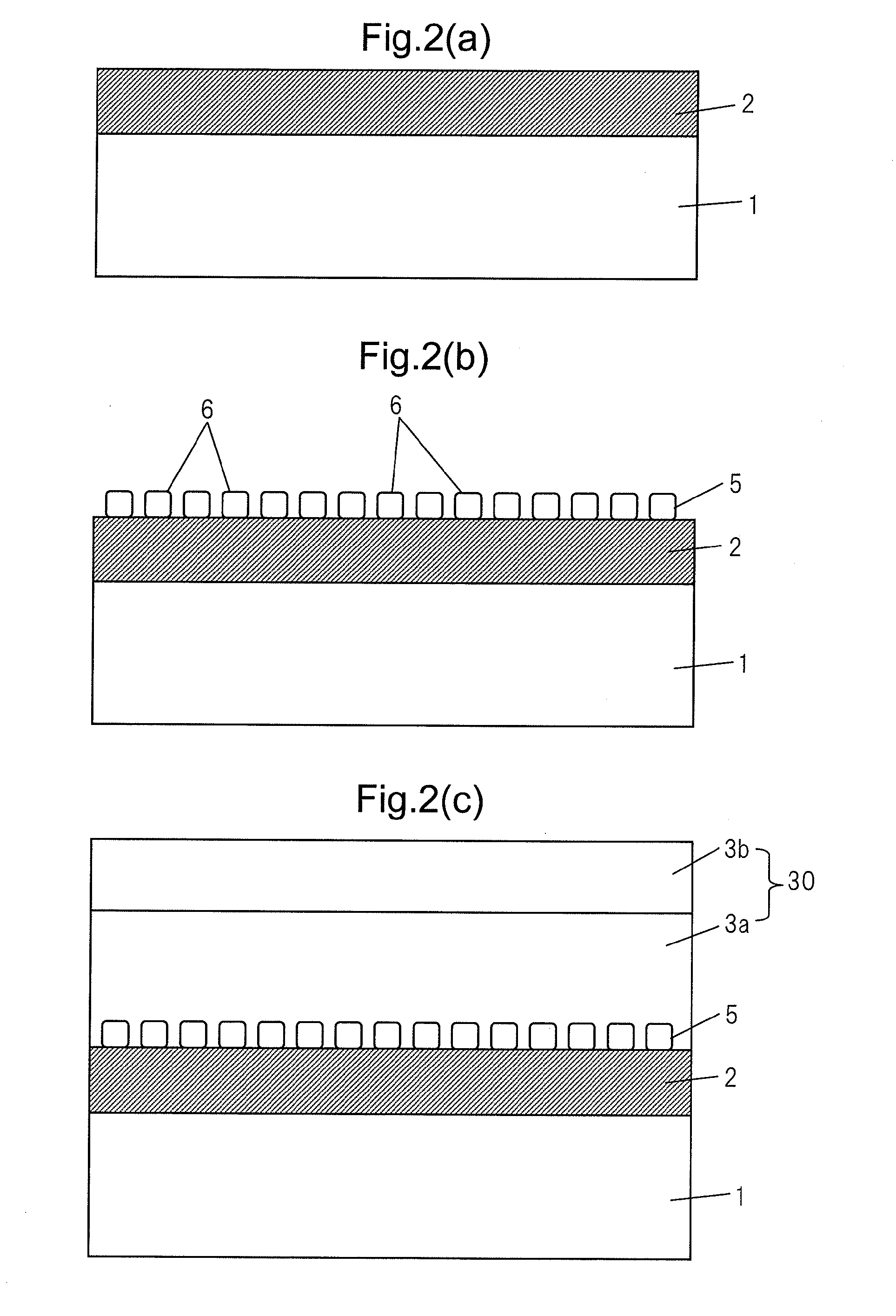Thin film solar cell and manufacturing method therefor
a solar cell and film technology, applied in the field can solve the problems of insufficient art of forming such an insulation film, insufficient photovoltaic conversion efficiency of crystal-type solar cells, and insufficient so as to and improve the photovoltaic conversion efficiency of thin film solar cells
- Summary
- Abstract
- Description
- Claims
- Application Information
AI Technical Summary
Benefits of technology
Problems solved by technology
Method used
Image
Examples
first embodiment
[0031]FIG. 1 is a cross-sectional view which shows the schematic structure of a thin film solar cell of a substrate structure according to the present invention, in particular, the structure of a thin film solar cell which uses a CIS-based semiconductor as the p-type light absorption layer. In the figure, 1 indicates a substrate which is comprised of glass, a plastic, a metal sheet, etc., 2 a metal back surface electrode layer which has Mo, Ti, Cr, etc. as a material, 3 a p-type light absorption layer which is comprised of a CIS-based semiconductor, and 4 an n-type transparent electrode film which has ZnO, ITO, etc. as a material. These form the window layer of this solar cell. Note that, between the p-type light absorption layer 3 and the n-type transparent electrode film 4, a high resistance buffer layer which has Zn(O, S, OH), CdS, In2S3, etc. as its material may be provided. The p-type light absorption layer 3 is comprised of Cu(In, Ga)Se2, Cu(In, Ga)(Se, S)2, CuInS2, etc.
[0032]...
embodiment 2
[0052]FIG. 4 is a cross-sectional view which shows the schematic structure of a super straight structure of a thin film solar cell according to the present invention and, in particular, shows the structure of a thin film solar cell which is comprised of amorphous silicon. In FIG. 4, 10 indicates a glass or other transparent substrate, 11 an ITO or other transparent electrode film, 12 a p-type amorphous silicon layer, 13 an i-type amorphous silicon layer, and 14 an n-type amorphous silicon layer. The transparent electrode film 11 is formed on the substrate by forming an ITO film by sputtering etc. The p-type amorphous silicon layer 12, i-type amorphous silicon layer 13, and n-type amorphous silicon layer 14 configure a light absorption layer and are formed by forming p-, i-, and n-types of amorphous silicon by plasma CVD etc. on the transparent electrode film 11.
[0053]Reference notation 15 shows a nanoparticle dispersed layer which is formed on the n-type amorphous silicon layer 14. ...
PUM
| Property | Measurement | Unit |
|---|---|---|
| particle size | aaaaa | aaaaa |
| particle size | aaaaa | aaaaa |
| thickness | aaaaa | aaaaa |
Abstract
Description
Claims
Application Information
 Login to View More
Login to View More - R&D
- Intellectual Property
- Life Sciences
- Materials
- Tech Scout
- Unparalleled Data Quality
- Higher Quality Content
- 60% Fewer Hallucinations
Browse by: Latest US Patents, China's latest patents, Technical Efficacy Thesaurus, Application Domain, Technology Topic, Popular Technical Reports.
© 2025 PatSnap. All rights reserved.Legal|Privacy policy|Modern Slavery Act Transparency Statement|Sitemap|About US| Contact US: help@patsnap.com



